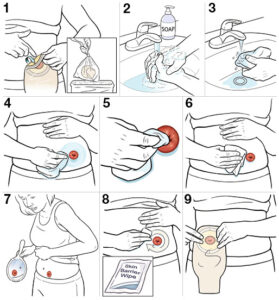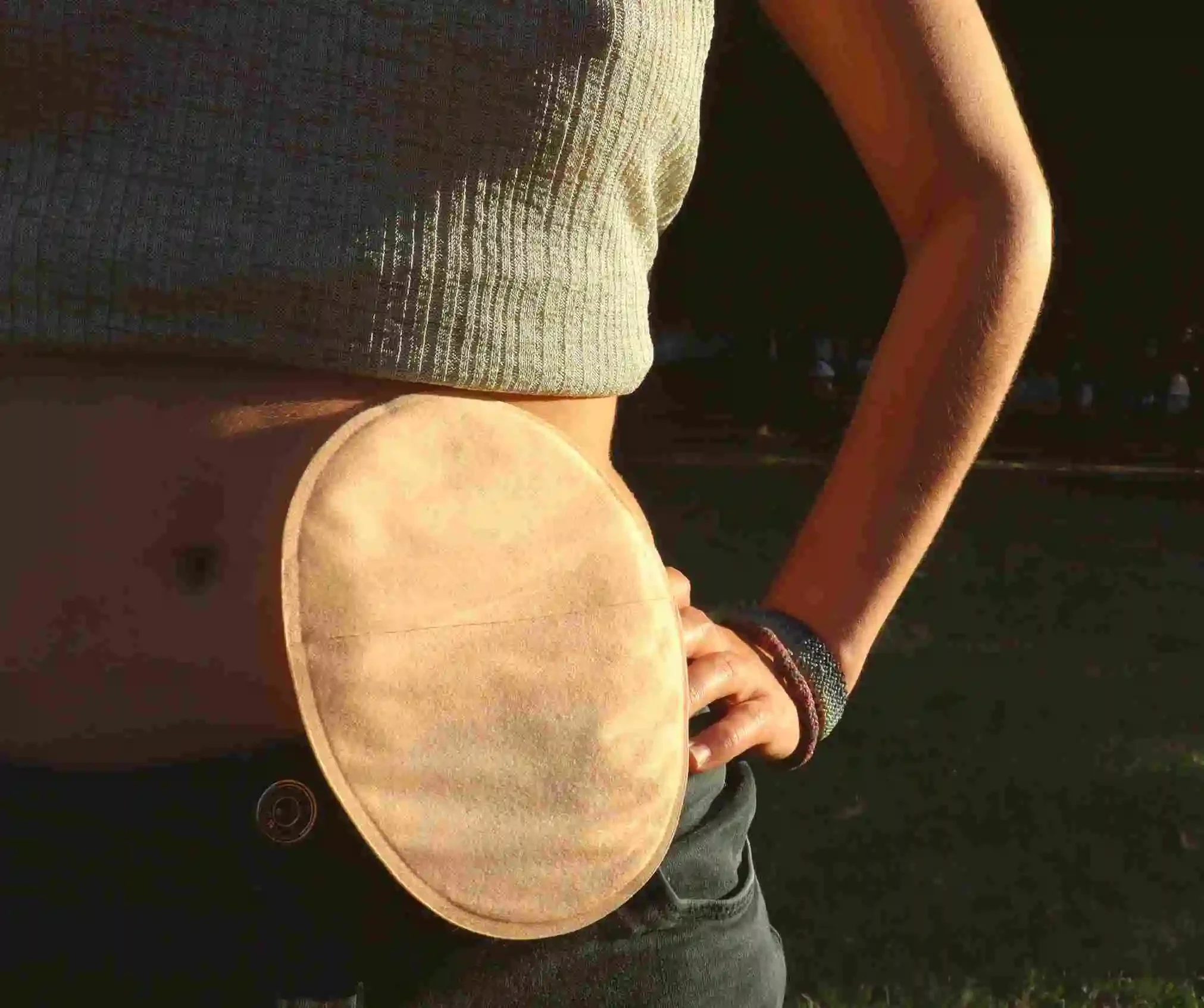Having a stoma can be a life-changing experience. Depending on the underlying medical condition, a stoma can be either temporary, allowing the digestive system to heal, or permanent. Ensuring that a stoma is properly maintained and remains healthy is essential for minimising risks and having confidence in managing your stoma effectively. This is why comprehensive stoma care is incredibly important, and specialised stoma nurses play a vital role in providing essential support and guidance for individuals with a stoma.
Appearance of a healthy stoma:
- Red and moist
- Protruding from the skin
- Opening of stoma should be in the centre
- Surrounding skin should be intact
Stoma Pouch Change
Equipment
- Clean stoma bag
- Scissors and measuring device (if pouch is not pre-cut)
- Gauze
- Warm tap water
- Disposal bag
- Adhesive remover (if needed)
Procedure
- Thorough hand wash with water and soap or alcohol-based hand rub.
- In case of using a drainable bag, empty contents into a disposable container before removing the bag.
- Slowly and gently peel the adhesive away from the skin with one hand, applying a gentle pressure to the skin with the other hand.
- To prevent spillage, fold the bag in two and place in a disposable bag.
- Soak a piece of gauze in tap water and wipe away the excess faeces or mucus from the stoma.
- Check skin and stoma for any abnormalities (ulcerations, sores etc) – if all appears healthy, you can continue. For any abnormalities, report this to stoma care nurse, physical healthcare practitioner or medic.
- Wash skin and stoma with gauze soaked in warm water until clean.
- Dry skin gently and thoroughly.
- If no pre-cut bags are available, measure and cut appliance leaving a 3mm gap.
- Apply the clean bag.
- Dispose of soiled tissues, containers and used bag.
- Wash hands using soap and water or alcohol-based hand rub.

Photo Credit: HealthClips
Risks to consider
A healthcare professional must be notified if any of these occur:
Signs of infection
- Swelling
- Inflammation
- Discharge
- Odour
Signs of blockage
- No output
- Liquid stool (if this is not a usual occurrence)
- Bloating and/or abdominal pain
- Cramps
- Swelling at the site
- Nausea and vomiting
Bleeding from stoma site
This may be a sing of skin issues resulting in:
- Eroded skin – gradual breakdown of the skin
- Over granulation – excessive tissue above the surface of the skin around the edge of the stoma
- Ulceration or wounds to skin around stoma
- Maceration – an area of wet skin around stoma that may appear white
- Mucocutaneous separation – separation of the stoma and the skin surrounding stoma
How can Cavendish Homecare help?
At Cavendish Homecare we are experts in providing stoma homecare for clients who want to remain in their own homes. When it comes to your health and wellbeing, choosing the right homecare package is of utmost importance and navigating this process can be overwhelming. With Cavendish Homecare by your side, you’ll have the support you need to remain safely at home while enjoying elevated health and wellbeing.
If you would like to enquire about our homecare services, contact us on, 02030085210 or email us at info@cavendishhomecare.com.

About the Author…
Misha Zemkova
Operations Coordinator
Misha plays a key role in ensuring the smooth and efficient running of day-to-day operations across the business. With a background in supported living and a degree in Health and Social Care, she brings both experience and empathy to her role.
 Back
Back